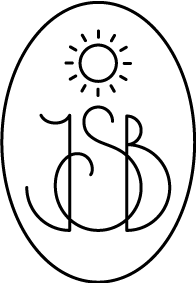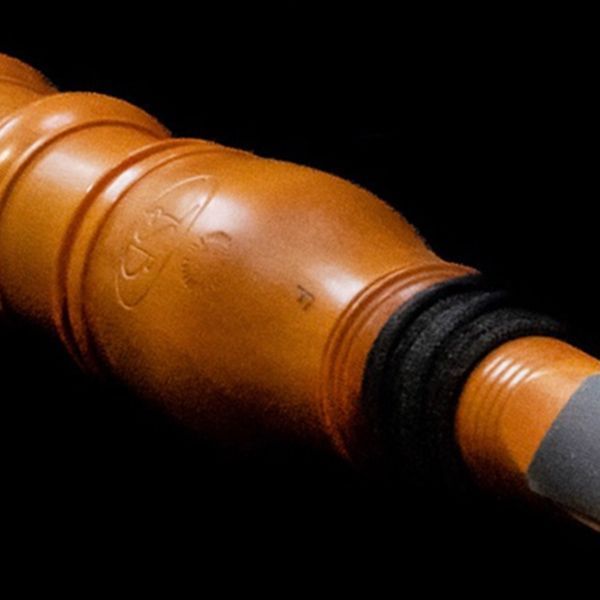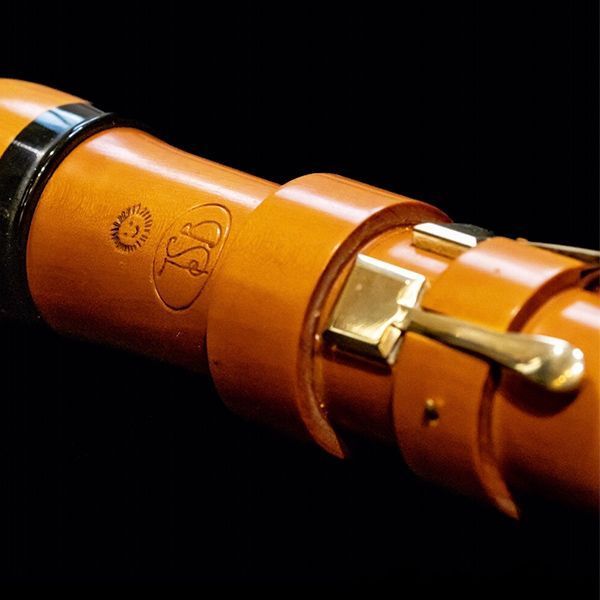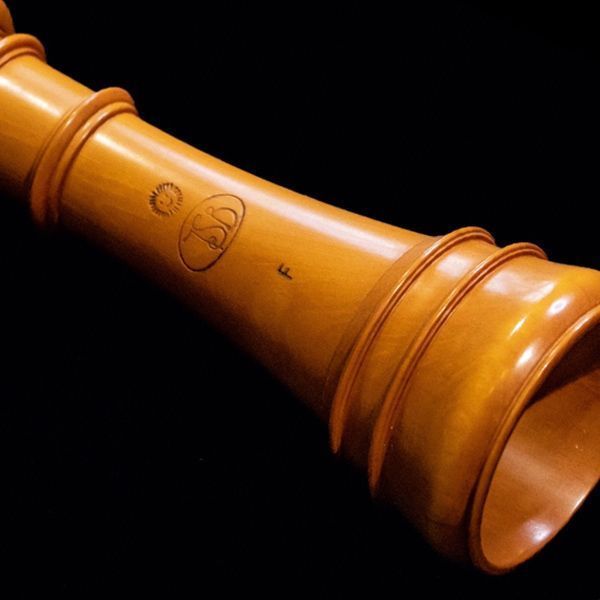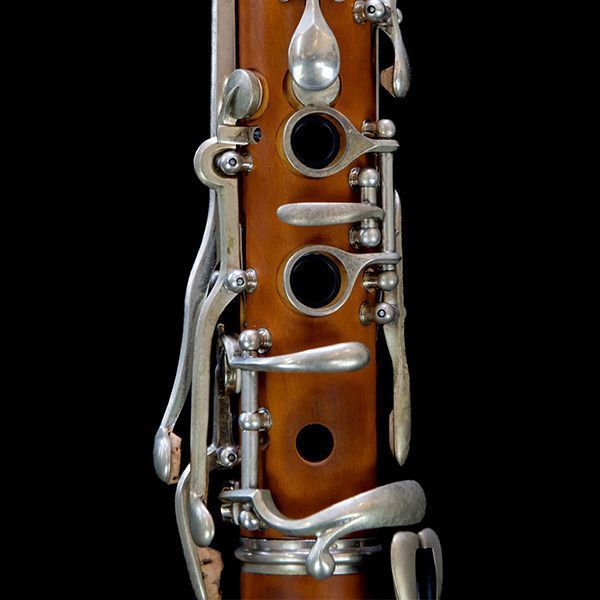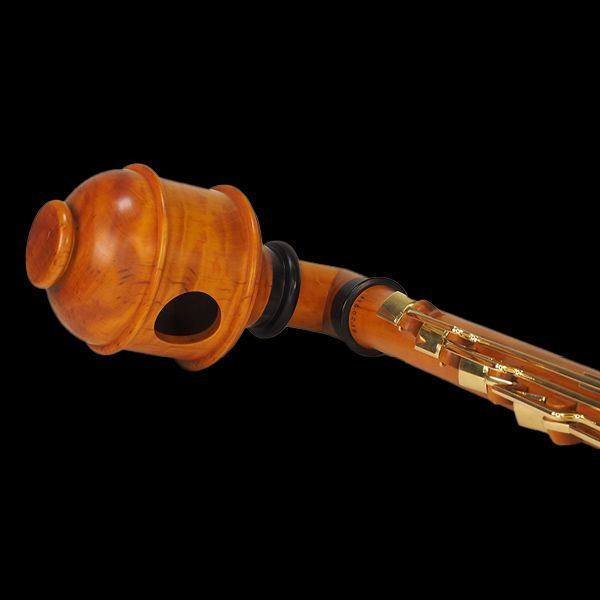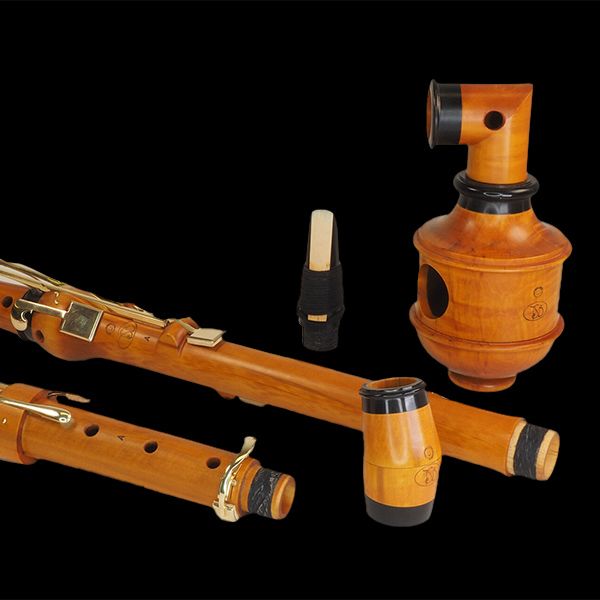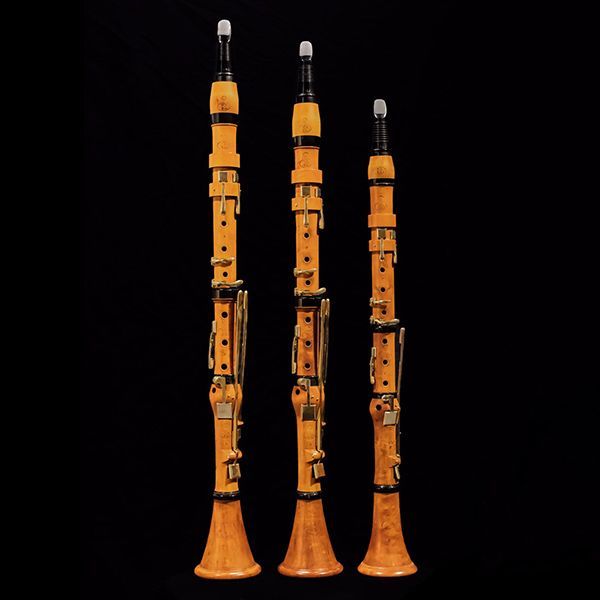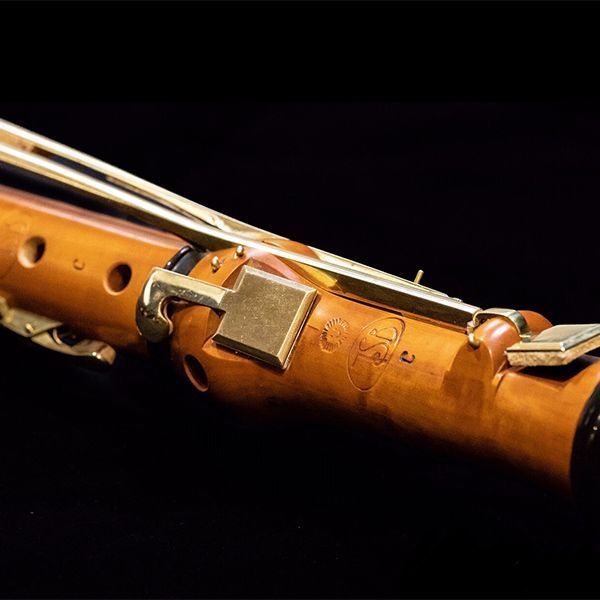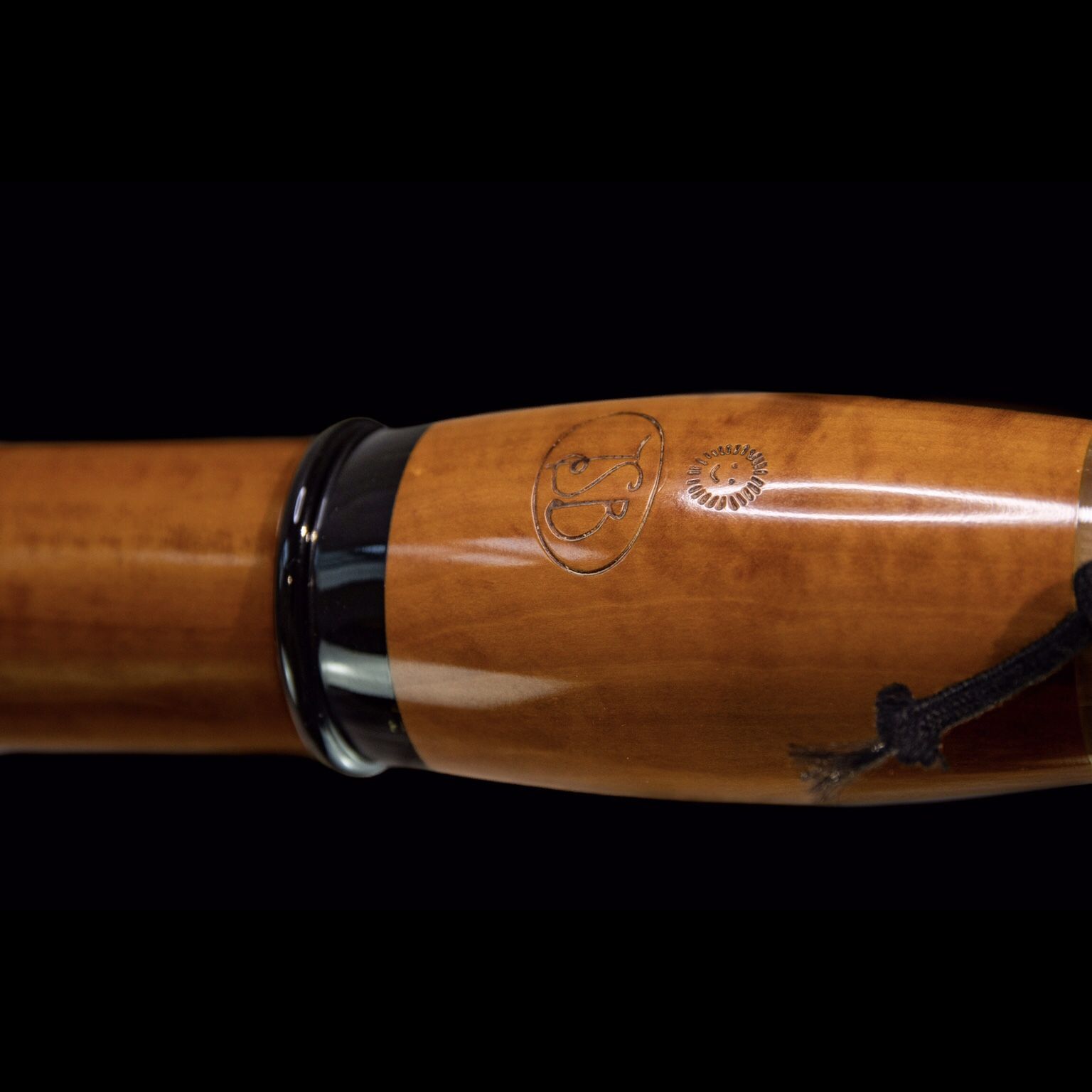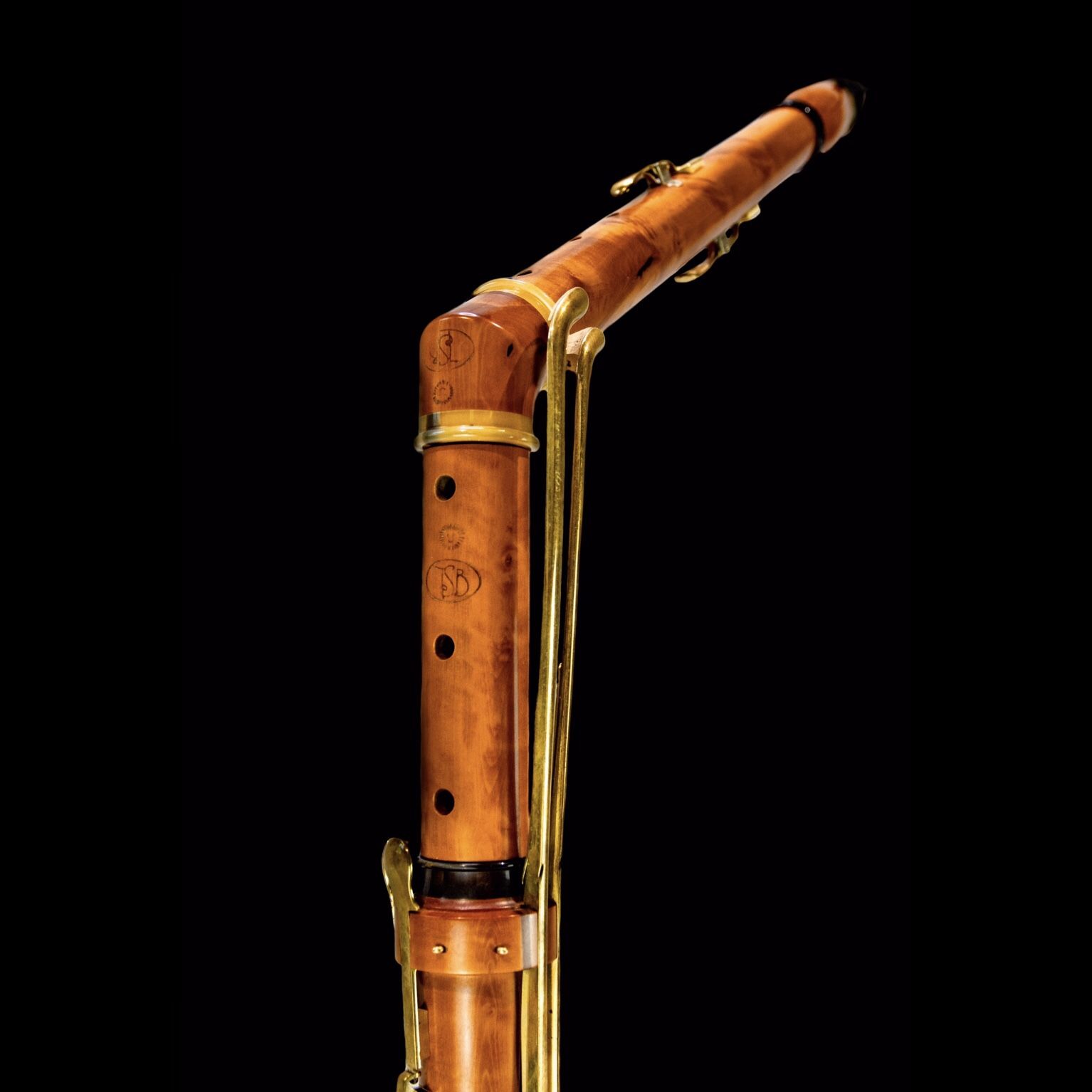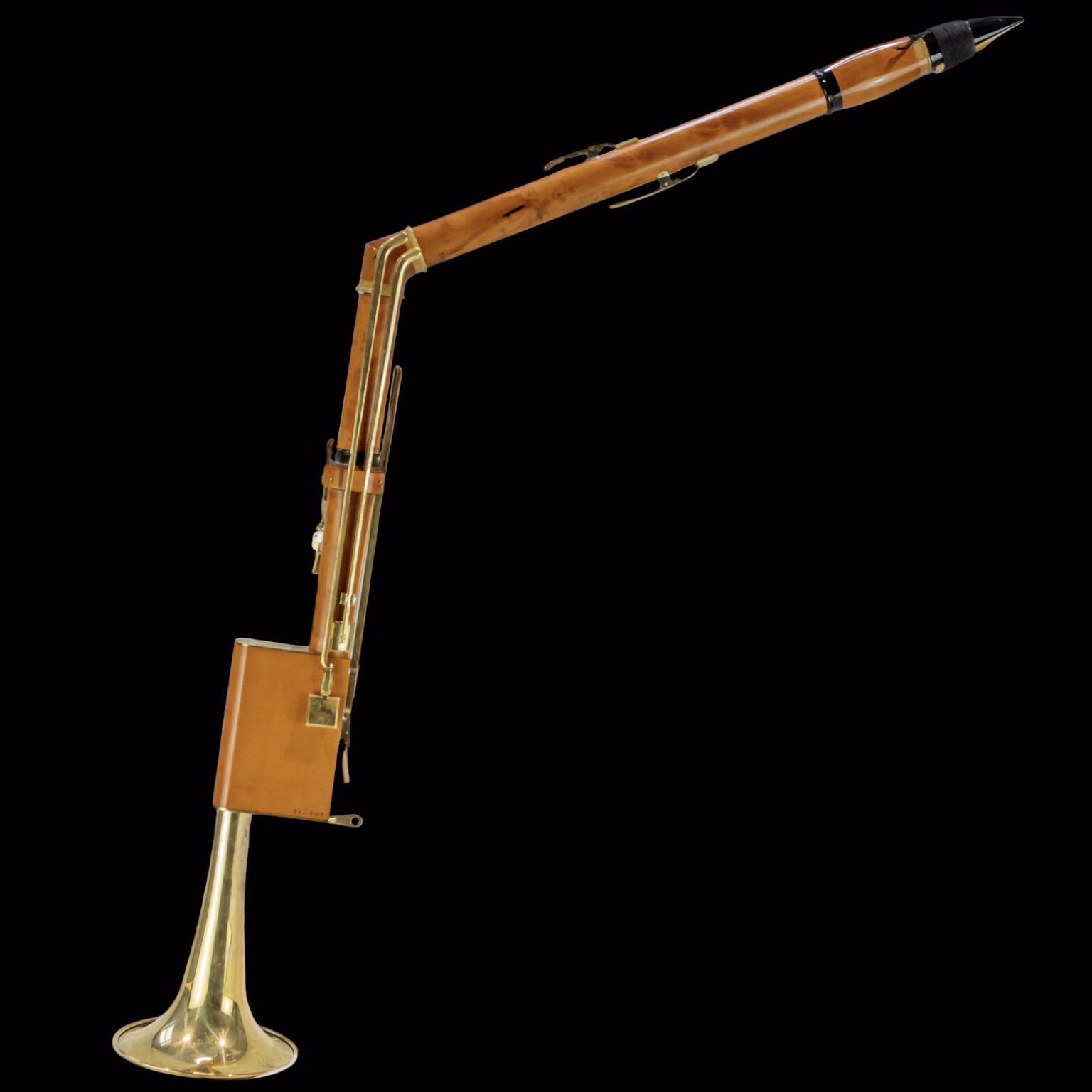
Seggelke Period CLARINETS ORIGINAL REPRODUCTIONS
Making period clarinets requires a high level of skill and experience. The purpose of reproducing period clarinets is to recreate the sound quality and playing feel of a particular era. This requires a great deal of care and precision. The reproduction of clarinets from earlier times must reproduce the original design features and playing technique as accurately as possible.
ORIGINAL IMAGE
Knowledge of proportions and dimensions is a prerequisite for the functional reproduction of historically significant original instruments. For conservation reasons, original instruments from museums and collections may only be played very briefly, if at all, in order to gain insights into pitch and the relationship between bore and tone holes. In addition, the materials used for production must meet the original standards.
All our historical replicas are made from boxwood. The mouthpieces are also made from boxwood, although some replicas can be supplied in hard rubber on request.
HISTORICAL SOUND
The reproduction of a period clarinet also requires a deep understanding of the playing practice and musical style of the respective era. In order to achieve an authentic sound quality, the clarinet must be built and adjusted in the right way. This may mean that certain parameters of the original instrument have to be adapted for the replica. For example, a given tuning pitch can be achieved without altering the typical sound of the instrument.
COLLABORATION WITH MUSEUMS
Our workshop is the place where history comes alive again. Jochen Seggelke has an excellent reputation for the restoration of historical instruments. This is why we are always given exclusive access to such instruments. Decades of collaboration with leading museums for musical instruments have fundamentally shaped our expertise in earlier crafting methods and the installation of mechanics in this field. We have now incorporated this know-how into our historical replicas.
The result is instruments that are not only unique in sound, but also carry the aesthetic heritage of bygone eras. Experience the magic of sounds long gone and immerse yourself in the history of music. Whether you are a musician, collector or enthusiast – our historical instruments will delight and inspire you.
JSB IMPRESSIONS
historical replicas
in use
WORKSHOP SESSIONS with Clarimonia: A very little night music (Mozart)
CLARINETS early 18th CENTURY
a=415 Hz
Clarinet in F
after SCHERER FAMILY – BUTZBACH
Immerse yourself in the world of 18th century music with our clarinet in F. This instrument is based on the historical model from the workshop of the Scherer family from Butzbach in Hessen. The family consisted of respected wood turners and instrument makers who were already prominent before 1700. Among the many talented members of the family, Georg Heinrich Scherer (1703-1778) may have been the creator of this clarinet.
This instrument replica makes room for speculation and theories about what music was once played with it. The tuning in F indicates a wide range of possible uses. This historical clarinet could have served as an alternative to horns, trumpets or flutes. Whether at royal courts, in chamber music ensembles or in traditional village festivals – the clarinet played an important role in the music of the late 18th century and was often a valuable element in orchestration.

Clarinet in D, 2 keys
after J. Denner – Nuremberg
The replica of Jakob Denner’s instrument from the Germanisches Nationalmuseum in Nuremberg represents one of the earliest clarinets.
Jakob Denner (1685-1735) was the eldest son of Johann Christof Denner (1655-1707) and was thus directly involved in the development of the clarinet. Although the beak is still quite wide (cylindrical up to the tip), the short, open facing allows effortless playing in the clarino register. In this register the sound of the instrument is very similar to that of the natural trumpet.
“Clarino” parts can easily be performed on those types of clarinets, and the concertos by Johann Melchior Molter represent outstanding solo literature.

Clarinet in C, 2 keys
after J. Denner
The original model of our C clarinet after Jakob Denner is in the museum of musical instruments in Berlin, the Sammlung Preussischer Kulturbesitz Berlin. The tuning pitch of the instrument is around 440 Hz. Therefore we chose to modify the upper joint and the middle joint slightly in order to be able to offer the instrument in the standard baroque tuning pitch of 415 Hz.
The 440 Hz tuning pitch indicates use with choir or organ. A middle joint in 415 Hz is for playing in an orchestra or chamber ensemble.
CLARINETS end of the 18th CENTURY
a=430 Hz
Clarinet in C, 5 – 8 keys
after Bühner & Keller – Strasbourg
5 keys
6 keys + double hole for c’ sharp
8 keys
The Bühner & Keller company from Strasbourg existed between 1802 and 1844. Their instruments are referred to in Ozi’s bassoon school. Our replica is based on an instrument from theSammlung Staatliche Museen Meiningen .
This C clarinet is externally comparable to the Baumann clarinet (Paris, 1772-1845), but has a typical German bore with a late starting cone, and therefore a very full and mellow sound. The original model has 5 keys. We offer it with up to 8 keys, depending on your wishes. The instrument has excellent intonation and is easy to play. This makes it easy to switch to B-flat or A clarinet, as the mouthpiece can also be played with reeds for B-flat clarinets.

Clarinet in Bb/A
after J. Frölich – Dettelbach
5 keys, double hole for c’ sharp
in Bb with interchangeable middle joint to A (also in 420 Hz on request)
A special feature of this early five-keyed clarinet is the bell, which is not separated from the lower joint. The original instrument is preserved in a private collection, the barrel and mouthpiece are missing and have been replaced. Characteristic is the thin wall thickness of the middle joint with very small tone holes, far apart from one another.
With 14.55 mm, the bore can be described as relatively wide. The original instrument dates from the last quarter of the 18th century and marks the transition from the 4-keyed clarinet of the early Classical period to the 5-keyed instrument of the Viennese Classical period.
The proximity of Frölich’s workshop to the Würzburg Residence suggests that the famous Würzburg clarinet virtuoso and teacher, Phillip Meissner (1748-1816), knew and perhaps even used the instruments.

Clarinet in Bb/A
after H. Grenser – Dresden
7 keys
9 keys
11 keys
Basset lower joint for A clarinet
Heinrich Grenser (1764-1813) took over the workshop of his uncle August Grenser in Dresden in 1796. Our replica refers to the instruments from the musical instrument museum in Markneukirchen in A and Bb.
Virtuosos such as Hendrik Crusell and Ivan Müller played on clarinets by Heinrich Grenser. In its basic form it is still close to the classical 5-keyed clarinet. The thick body and stable intonation, even on difficult semitones, make it possible to interpret works by Weber, Mendelssohn and others.

Basset clarinet in A
after the drawing of the instrument by Anton Stadler and Theodor Lotz
The basset clarinet (in A, Bb or C) is an instrument similar to the basset horn. Wolfgang Amadeus Mozart composed his Clarinet Quintet KV 581 and the Clarinet Concerto KV 622 for this instrument, which today only exists in a reconstructed version. The basset clarinet was developed around 1788 by the Viennese court instrument maker Theodor Lotz together with Mozart’s friend Anton Stadler (1753-1812). As was usual with the basset horn, they extended the range by a major third downwards, but included all semitones, so that four keys were necessary for the extension.
The basset horns from this period are diatonic and have a double-angled bore, while the shorter basset clarinet can still be made with a straight bore.
Since no original instrument is available for measurement, we have made our historical replica after extensive studies based on an original drawing of the instrument by Theodor Lotz. This drawing was found on a program note for one of Stadler’s concert tours in Riga in 1798, where he was mentioned as both the inventor and virtuoso performer of this instrument. The instrument is designed with a kind of d’amore bell, which was also used on some basset horn models. Our replica is based on the A clarinet after H. Grenser, Dresden. Similar instruments were made in different tunings, for example in the workshops of Johann Benjamin Eisenbrandt, Göttingen (before 1822) and Johann Georg Braun, Mannheim (between 1816 and 1833).
The lowest passages of the clarinet concerto were often octaved after Mozart’s death so that it could be played on the more common A clarinet. With a basset clarinet in A, which we also offer in modern form, the work can be played in its original form. You can also use the Stadler bell for our modern basset clarinets.
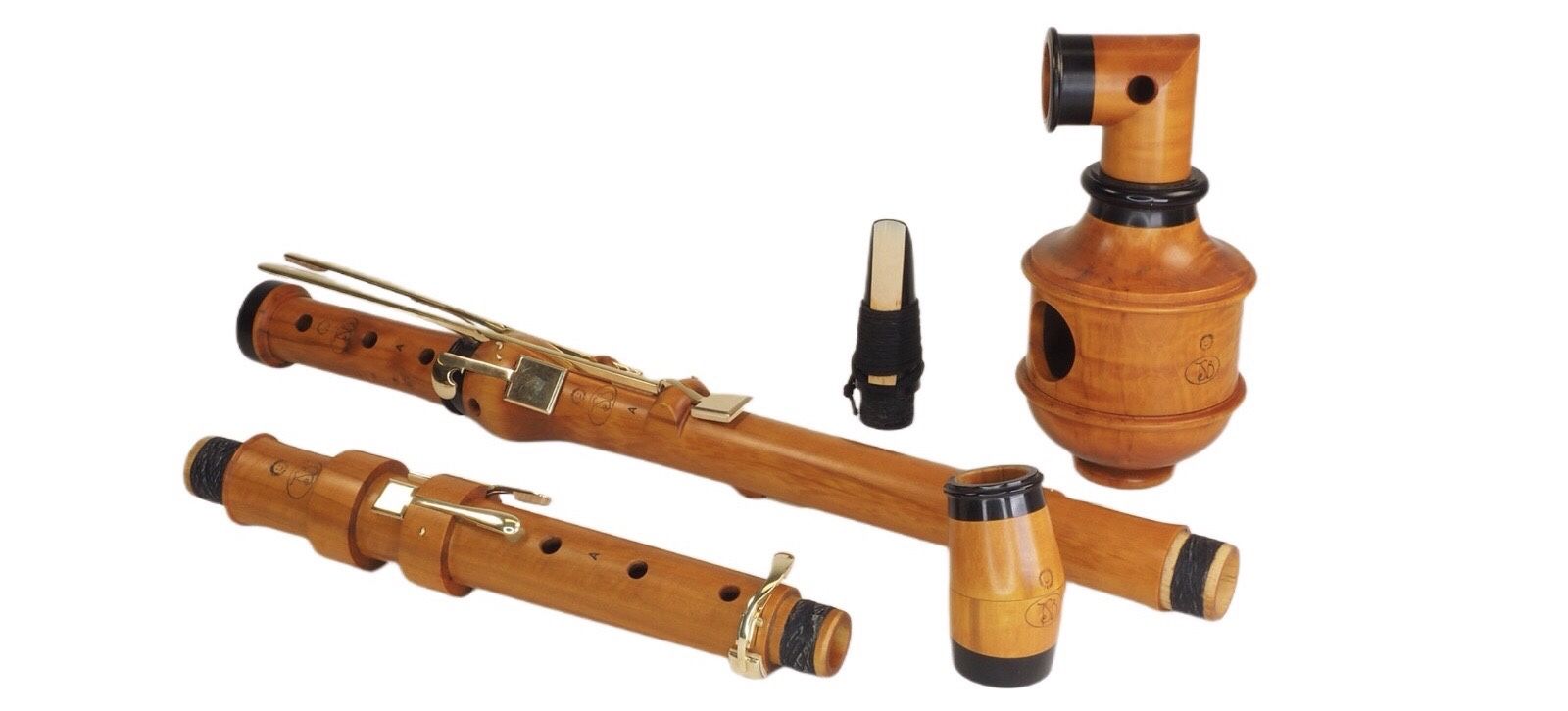
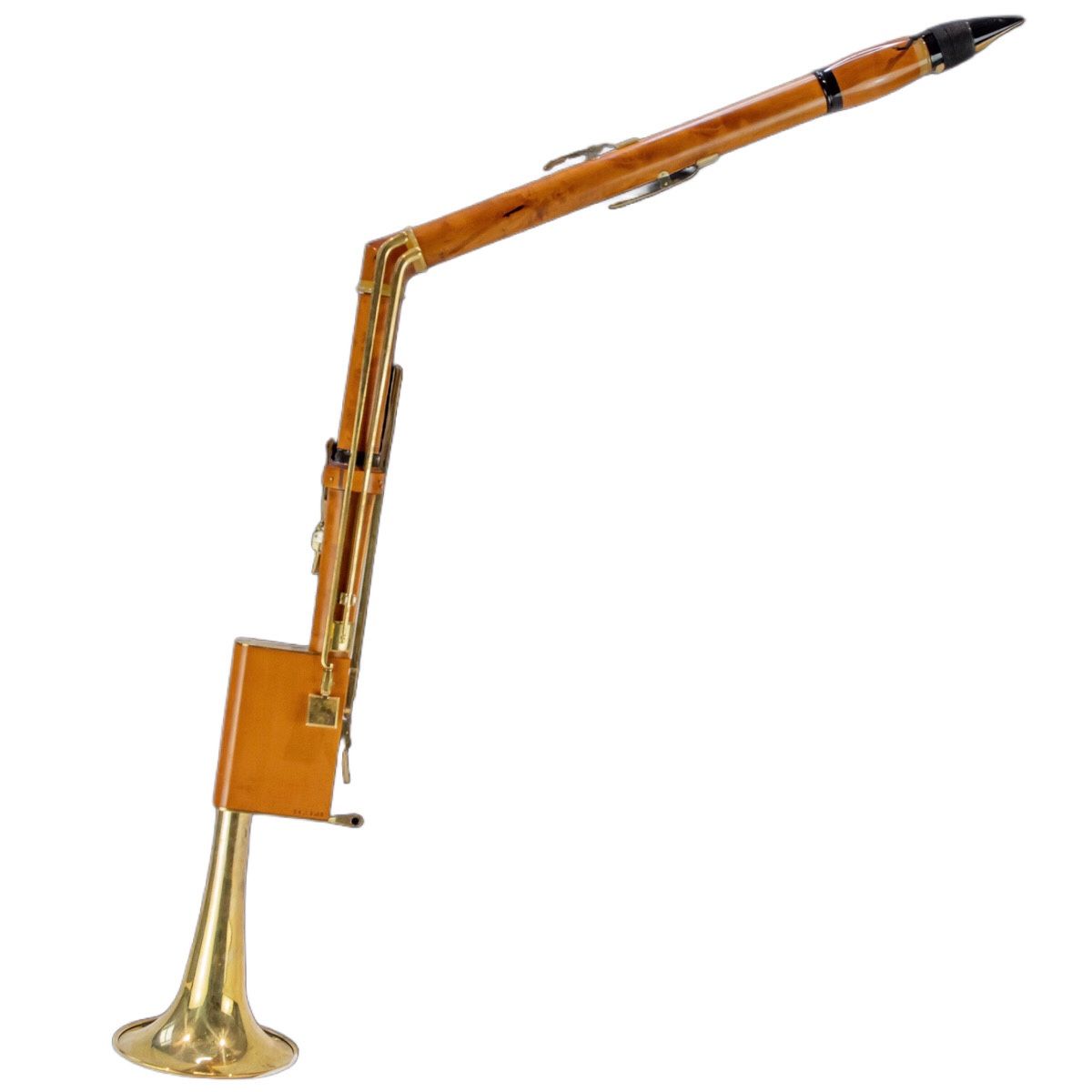
Basset horn in F
after Hammig jun. – Vienna
In 1792 Friedrich Hammig sen. presented a “new basset horn”. At the turn of the 19th century, he handed over the instrument-making workshop to his son Friedrich Hammig Jr. who continued to build the instrument in his father’s style.
The model for this copy was found in the Buffet-Crampon collection in Mantes-La-Ville (France). It has been preserved with two barrels and upper joints of different lengths, the missing mouthpiece has been replaced. The preserved instrument has six keys and two basset keys for low D and C. We build this instrument with up to nine keys and three basset keys.
AUTHENTIC
SOUND QUALITY & AESTHETICS
Original Design Features
Materials according to original standards
Period
Instruments after original drawings

CLARINETS 19th CENTURY
A 19th CENTURY
Clarinet in A/Bb
after HEINRICH FRIEDRICH KAYSER – Hamburg
13 keys
Kayser’s workshop (1809-1890) was located in Denmark at the time. As a result, the instruments have become relatively well known, especially in Denmark and England. They are particularly suitable for the music of Robert Schumann, the early Johannes Brahms, Niels Wilhelm Gade and the opera literature up to around 1860/70. Original instruments can be found mainly in northern Germany and Scandinavia, but also in central Germany.
We made these replicas at the suggestion of Keith Puddy, Professor of Clarinet at the Royal Academy of Music (London).
Clarinets in A/B-flate
after Georg Ottensteiner – Munich
19 keys
Silver-plated key-work, gold-plated on request
2 barrels, 438-440 Hz
Carl Baermann in his clarinet school from 1860/61 – 1917 edition – Volume la ED 502 a:
“Then the royal Bavarian court musician Theobald Boehm appeared with his “new flute” and gave a completely new direction to the world of instrument making. After the most impartial examination of all new inventions, I became myself of the deepest conviction that I would be able to use it without detriment to the character of the instrument and without making what was previously easy more difficult. Thus, with the help of the truly excellent and expertly trained instrument maker Georg Ottensteiner in Munich, the clarinet was created in the form shown below. There is no perfect instrument with absolutely pure tuning, any more than it would be possible to make and tune a piano that is perfect in this respect. Any musician who knows the difference between sharps and flats will realize this, because C sharp, for example, as the major third of A major, is very different from D flat, as the minor third of B flat minor.”
After Richard Mühlfeld’s death in 1907, his family donated his clarinet set to the Music History Collection of the Staatliche Museen Meiningen. With their great tradition, these instruments are today representative of the performance practice of the second half of the 19th century. They are also closely related to Brahms’ late works for clarinet.
Our replicas adhere closely to the original dimensions. The keywork of the original instrument is made of german silver (CuZnNi). Our standard replicas have a silver-plated keywork, or you can request gold-plated keys for an additional charge. Mouthpieces are made by hand from grenadilla wood or hard rubber according to the original.

GOOD TO KNOW
SEGGELKE PERIOD CLARINETS
ORIGINAL
REPLICAS
HANDCRAFTED
SOUND OF A
BYGONE ERA


